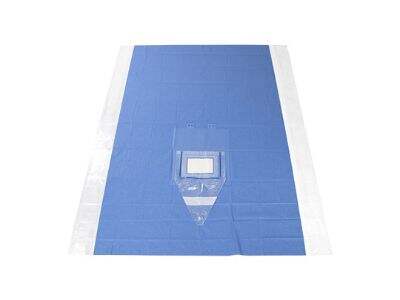They use special tools and equipment so that everything goes well! One of the key tools used in the operating room are antimicrobial drapes. After that surgery, these special drapes are a big part of what keep patients safe from infection.
Why antimicrobial drapes matter in surgery
Antimicrobial drapes are large sheets in which the material has been specially treated for the ability to destroy harmful germs and bacteria. When a patient undergoes surgery, doctors and nurses employ these drapes to drape the part of the body where the surgery will be performed. That keeps this space clean, and free of germs that can cause infections. Doctors can ensure that the patient remains healthy after surgery and heals properly by using antimicrobial drapes.
Reducing SSI risk through the use of antimicrobial drapes
Surgical site infections are among the most prevalent complications following any surgical procedure. These infections happen when germs find their way into the surgical wound and cause trouble. Doctors can lower the risk of such infections by using antimicrobial drapes. The drapes are made from a special material to help kill germs and bacteria, before they make contact with the wound. This means patients are less likely to suffer from sickness after the surgery and can make a quicker recovery.
The role of antimicrobial drapes in post-surgical complications.
Antimicrobial drapes in the operating room There are plenty of reasons to employ antimicrobial drapes in the surgical environment. The main benefits are that they reduce post-operative complications, including infections. By keeping the surgical site clean and germ-free doctors can help ensure that the patient will heal right, and not get sick after surgery. It can also help to shorten the time that a patient must remain in the hospital, which would be a comfort to the patient and his or her family.
Improving patient outcomes through antimicrobial drape technology
Results in patients after surgery can also be improved by the use of antimicrobial drapes. Patients who avoid infections or other complications will be more likely to bounce back and return to normal routines. This is the amount of time they can get better faster and feel better sooner. With antimicrobial drapes, physicians can provide their patients the best chance of a good recovery after surgery.
Antimicrobial drapes as an essential part of infection control protocols
Infection prevention is fundamental in staying safe for patients who have surgery. Doctors can therefore ensure that the risk of infections is reduced if they make use of antimicrobial drapes in their infection prevention protocols. This is an important aspect of keeping patients well and having a successful surgery. By adhering to these protocols, and the use of antimicrobial drapes, doctors can treat their patients under the best conditions.
In conclusion, the role of the surgical drape Thailand factory is to effectively prevent any surgical site infection and to ensure that the patient remains safe through surgery. If doctors understood the importance of these special drapes and how they work, they would be much less likely to use them in ways that pose risks for complications, and more likely to use them in ways that help patients heal faster. Antimicrobial Drapes and Their Role in Facilitating Successful Surgeries It’s important to help ensure the success of surgeries and positive patient outcomes. By using these drapes as an essential process in preventing transmission of infection, in which case doctors dosing the hardest, all the patients receive best possible care.
Table of Contents
- Why antimicrobial drapes matter in surgery
- Reducing SSI risk through the use of antimicrobial drapes
- The role of antimicrobial drapes in post-surgical complications.
- Improving patient outcomes through antimicrobial drape technology
- Antimicrobial drapes as an essential part of infection control protocols

 EN
EN
 AR
AR
 BG
BG
 HR
HR
 CS
CS
 DA
DA
 NL
NL
 FI
FI
 FR
FR
 DE
DE
 EL
EL
 IT
IT
 JA
JA
 KO
KO
 NO
NO
 PL
PL
 PT
PT
 RU
RU
 ES
ES
 SV
SV
 TL
TL
 LT
LT
 SR
SR
 SK
SK
 SL
SL
 UK
UK
 VI
VI
 SQ
SQ
 HU
HU
 TH
TH
 AF
AF
 MS
MS
 GA
GA
 BE
BE
 HY
HY
 KA
KA
 BN
BN
 BS
BS
 UZ
UZ
 XH
XH
